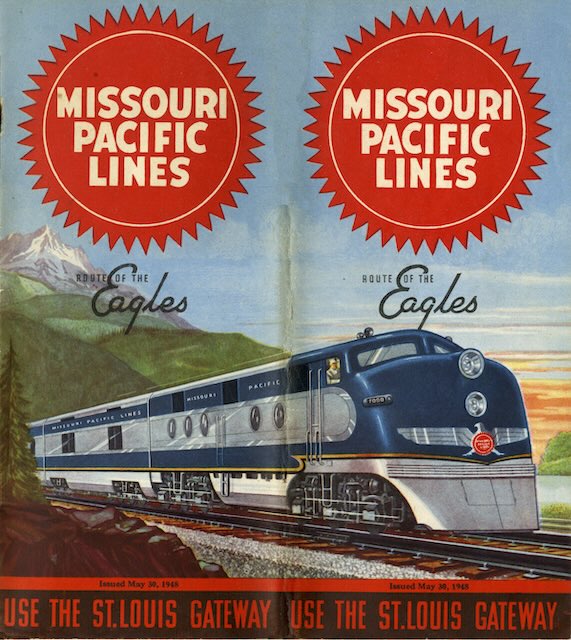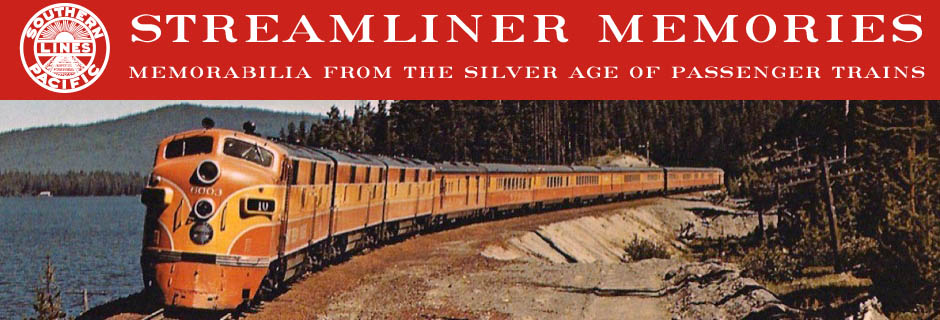Full page, four-color articles in this issue describe America’s wheat belt (which only slightly overlapped with Missouri Pacific routes), San Francisco, the Royal Gorge route to California, and outdoor music concerts in St. Louis. The inside front cover announces that Missouri Pacific will introduce four streamlined Texas Eagles “by the end of this summer.”
 Click image to download a 27.5-MB PDF of this 48-page timetable.
Click image to download a 27.5-MB PDF of this 48-page timetable.
Page 6 has a black-and-white photo of a curve-glass dome car built by Budd for the Colorado Eagle. While Burlington called its Budd domes “Vista-Domes,” in this ad Missouri Pacific introduced the term “Planetarium coaches.”
This timetable introduces a new twist on colors. Instead of a single tint color on eight interior pages, this one prints four pages with red letters and blue highlights and four pages with purple letters and red highlights. These pages include sidebars on Nebraska, the land of Evangeline, the Ozarks, Mexico, Atchison Kansas, and Brownsville Texas.
The centerfold maps of these timetables attempt to disprove the four-color hypothesis, which stated that it should be possible to color any map with just four colors without two adjacent territories being of the same color. The timetable maps are printed in yellow, light green, blue, and red, but for some reason Utah is printed in a dark green.
A close look reveals that it had to be printed a fifth color because the states surrounding it are in yellow, light green, blue, and red. However, if Wyoming had been colored light green instead of red, Utah could have been colored red.
The map is signed Crawford C. Anderson, who also made maps for the Pennsylvania, Boston & Maine, and other railroads. As a mapmaker, Anderson must have known the four-color hypothesis (which wasn’t proven until 1976), but for some reason, he decided it was easier to print Utah in a fifth shade than to change the color of Wyoming.
